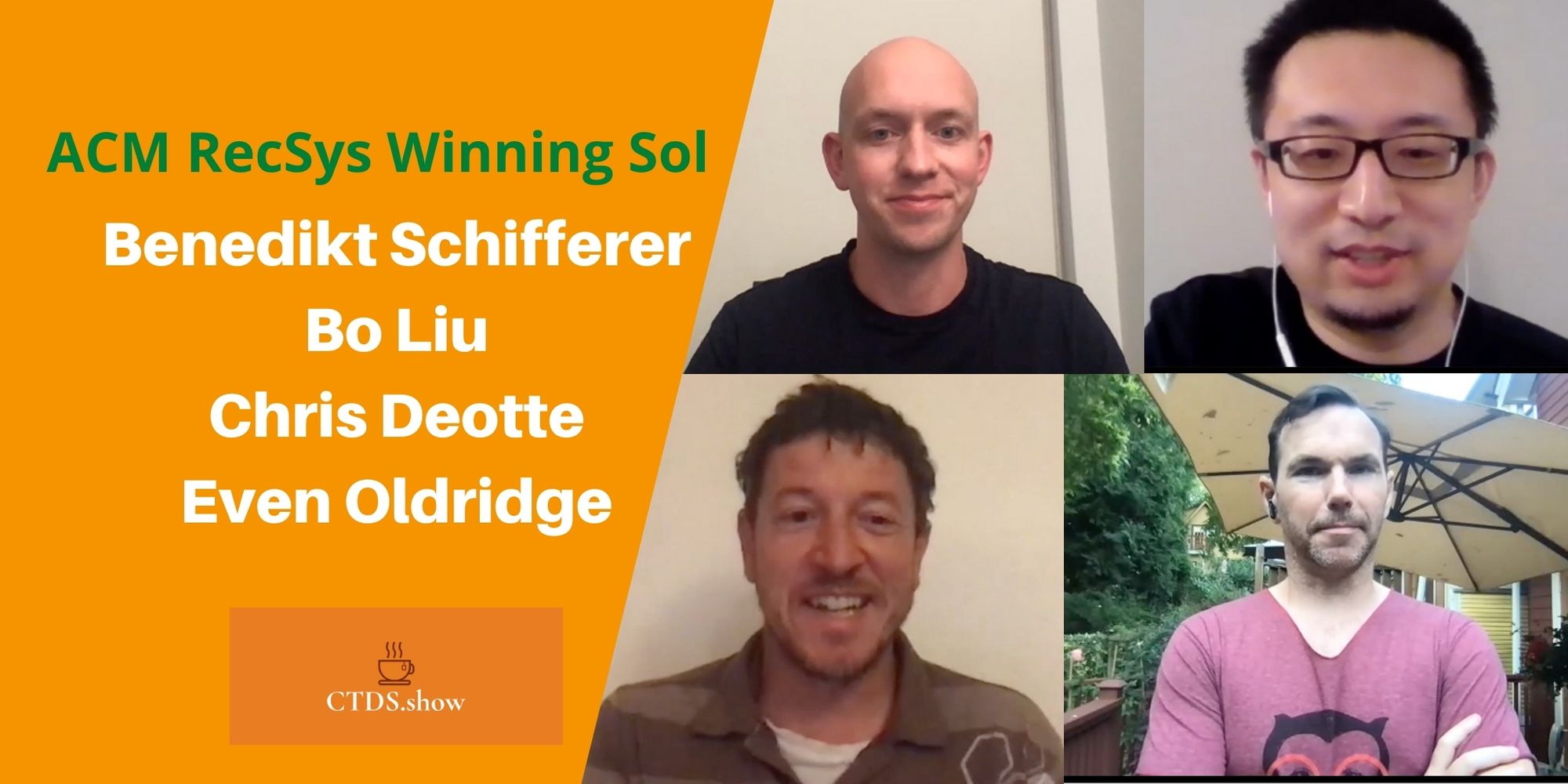Part 16 of The series where I interview my heroes.
Index and about the series“Interviews with ML Heroes”
You can find me on twitter @bhutanisanyam1
Today, I’m honored to be talking to the Chief Scientist at Salesforce, one of the best Deep-NLP Teachers: Dr. Richard Socher.
Richard is Chief Scientist at Salesforce and has completed his Ph.D. in the Machine Learning domain from Stanford. He has also taught one of the best course and now a MOOC on NLP: CS224n

About the Series:
I have very recently started making some progress with my Self-Taught Machine Learning Journey. But to be honest, it wouldn’t be possible at all without the amazing community online and the great people that have helped me.
In this Series of Blog Posts, I talk with People that have really inspired me and whom I look up to as my role-models.
The motivation behind doing this is, you might see some patterns and hopefully you’d be able to learn from the amazing people that I have had the chance of learning from.
Sanyam Bhutani: Hello Richard, Thank you so much for doing this interview.
Dr. Richard Socher: Thanks for thinking of me.
Sanyam Bhutani: Today, you’re working as the Chief Scientist at Salesforce. You’ve also taught one of the best and most famous courses on NLP and you hold a Ph.D. in the ML domain. Could you tell the readers about how you got started? What got you interested in Deep Learning?
Dr. Richard Socher: Growing up I was always interested in math. I am also passionate about languages and believe they are the most interesting manifestation of human intelligence and it separates us substantially from the rest of the animal kingdom. AI allows me to combine both of these passions and build something that is changing the world. I started my education in Germany and then came to the US to get my Ph.D.
Sanyam Bhutani: Instead of joining a “Tech Giant”, you decided to start MetaMind right after completing your Ph.D. What made you pick this path, why did you feel it was necessary?
Dr. Richard Socher: When I graduated from Stanford with my Ph.D. I knew I wanted to build something that utilized all of deep learning’s potential- not just bits and pieces of it through specific applications. I founded MetaMind in 2014 as an AI platform that analyzes, labels and makes predictions on image and text data so businesses can make smarter, faster and more accurate decisions than ever before. In 2016 we were acquired by Salesforce which allowed our small team to put the power of AI in the hands of millions of users as part of Einstein.
Sanyam Bhutani: You’ve been working in the cutting edge developments for almost 10 years now. Which has been your favorite development over the years in terms of both industry and research?
Dr. Richard Socher: I’m incredibly excited and proud of my team’s most recent work on the Natural Language Decathlon (decaNLP), a new benchmark for studying general NLP models that can perform 10 complex natural language tasks at once. While the industry has made great progress on AI’s ability to mimic human language, the decaNLP is redefining the benchmark for success on language understanding and opening up new potential for what types of questions AI models can answer. And with zero shot learning, the decaNLP allows for a uniquely human ability by enabling models to make inference on an input it has never seen before.
Sanyam Bhutani: Natural Language Processing has arguably lagged behind Computer Vision. What are your thoughts about the current scenario? Is it a good time to get started as an NLP Practitioner?
Dr. Richard Socher: Computer vision and language understanding present very different challenges. In computer vision, we’ve had a lot of success with ImageNet which is broad enough to include many categories. Combined with neural networks, its a good default model for many different visual problems. The problem though is that there isn’t an equivalent for NLP. Language understanding is far more nuanced and there isn’t a single NLP task or data set that will solve for the whole complexity of language understanding.
In many ways I see the decaNLP doing for NLP that ImageNet did for computer vision. Because QA is so broad, and you can ask any question, we are able to cast any NLP problem as a question — What is the sentiment? What is the translation of this sentence? etc. — and train one model to master several tasks at once.
Sanyam Bhutani: For the readers and the beginners who are interested in working on Natural Language Processing, what would be your best advice?
Dr. Richard Socher: I would recommend for students who are new to the field to leverage online resources. My old Stanford class (cs224n.stanford.edu) for example is available online and Salesforce just recently published great content on deep learning for NLP on Trailhead, our free online learning platform.
Sanyam Bhutani: Given the explosive growth rates in research, How do you stay up to date with the cutting edge?
Dr. Richard Socher: I mostly use Twitter to stay up to date on the latest and connect with others in the field.
Sanyam Bhutani: Thanks to the internet, I’ve had the chance to enjoy your amazing keynotes and lectures (I’m a fan).
Could you share some tips on how does one effectively present technical ideas?
Dr. Richard Socher: I think it’s best to keep it simple and try to discuss the impact of AI back to people in a way that they can relate to.
Sanyam Bhutani: You’re an advocate of Ethics in AI. Could you shed light on a few areas that we must pay attention to even when we’re at this early age of building AI products?
Dr. Richard Socher: Differentiate between unfounded fears and the actual threats. AI bias is an imminent fear that needs to be addressed, whereas doomsday scenarios are a dangerous distraction. People need to start paying close attention to making sure the data sets that AI is trained on is diverse and free of bias, and that the teams building these systems also represent a diverse set of perspectives.
Sanyam Bhutani: DecaNLP has produced some very interesting results.
What are your thoughts about Multi-task learning, even outside of NLP?
Dr. Richard Socher: Multi-task learning is crucial for making AI more contextual and intuitive. Instead of being laser-focused on the performance of a single task and potentially missing important information that might help improve on the metric we care about, multi-task learning helps us benefit from related tasks and ultimately perform better.
Sanyam Bhutani: What future developments in “AI” are you excited about?
Do you think Siri will someday be able to help me do my CS224n assignment?
Dr. Richard Socher: There’s some existing potential in healthcare — making radiology and pathology more efficient and helping doctors diagnose diseases that the human eye may miss. As a researcher, I’m also excited to see NLP breakthroughs coming out of the lab and into production. In the near future, I think we will have more natural and intuitive chatbots that can properly answer customer service calls, complete tasks and even offer empathy.
Sanyam Bhutani: Do you feel Machine Learning has been overhyped?
Dr. Richard Socher: Hype cycles have existed around AI since artificial intelligence was created. People have been talking about AI that can talk, walk and function as a human since the 50’s but we are only just now getting to a point where that is a feasible reality in the next few years.
The excitement around AI is good, and as a researcher, I’m certainly excited, but we should be careful not to extrapolate breakthroughs beyond their actual capability because it does create confusion and misunderstanding.
Sanyam Bhutani: Thank you so much for doing this interview.
You can find me on twitter @bhutanisanyam1
Subscribe to my Newsletter for updates on my new posts and interviews with My Machine Learning heroes and Chai Time Data Science




